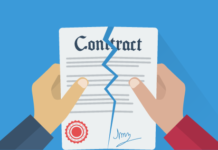A power of attorney, abbreviated as POA, is a legal document that gives another person the mandate to act on your behalf in various situations. This is an essential document for estate planning and ensuring your affairs are handled as you wish, mainly if you cannot make decisions for yourself. For a power of attorney to be both complete and legally binding, it must contain certain things. The following should be included in a power of attorney:
- Parties involved
One of the most important things that should be included in the power of attorney is the parties involved. You need to define all the parties involved clearly. This consists of the principal [the person granting the power] and the agent or attorney-in-fact [the person receiving the power to act]. A power of attorney that doesn’t identify the parties is considered not legally binding.
- The type of power granted
Next, a power of attorney needs to specify the type of power being granted by the principal. There are various types of powers of attorney. They include general, limited, and durable. A general power of attorney provides broad authority, while limited power of attorney restricts the attorney-in-fact’s powers to specific tasks. A durable power of attorney remains effective until the principal becomes incapacitated or dies.
- The extent of authority
A power of attorney must also clearly outline the specific powers and responsibilities the principal grants to the agent. This might include handling finances, managing real estate transactions, making healthcare decisions, and other tasks. To avoid any ambiguity, the details should be as comprehensive as possible.
- Duration of authority
Another thing is that the power of attorney should indicate whether the power granted to the agent is temporary or permanent. If it’s lasting, the principal must highlight the terms under which it would terminate, such as the specific date or after the principal’s death.
- Responsibilities of the agent
A power of attorney should outline the agent’s responsibilities and care standards they should comply with when making decisions on behalf of the principal. This helps set up expectations and ensures the attorney-in-fact acts in the principal’s best interest.
- Revocation and termination
A power of attorney can be revoked or terminated for various reasons. It can be triggered by a specific event, at the principal’s discretion, or by time. So, including provisions for revoking or terminating the power of attorney is essential. The principal should discuss the steps and conditions for revocation.
- Signature and notarization
Of course, for a power of attorney to be legally binding, it must be signed by the principal in the presence of a witness and in some instances, in the presence of a notary public. One of the best things about notarization is that it adds another layer of authentication and can be required for specific transactions.
- Witnesses
Finally, the signatures of the witnesses who can attest to the principal’s mental capability should be included. Some states may have specific requirements regarding the number and qualifications of witnesses.
Wrapping up
One of the most critical steps in estate planning is drafting a thorough power of attorney to ensure your affairs are handled according to your wishes. The document must be customized to your specific needs, precisely defining the extent of power, obligations, and terms. When creating a power of attorney, getting legal guidance can help ensure the document adheres to all applicable laws and fulfills its intended purpose.
























